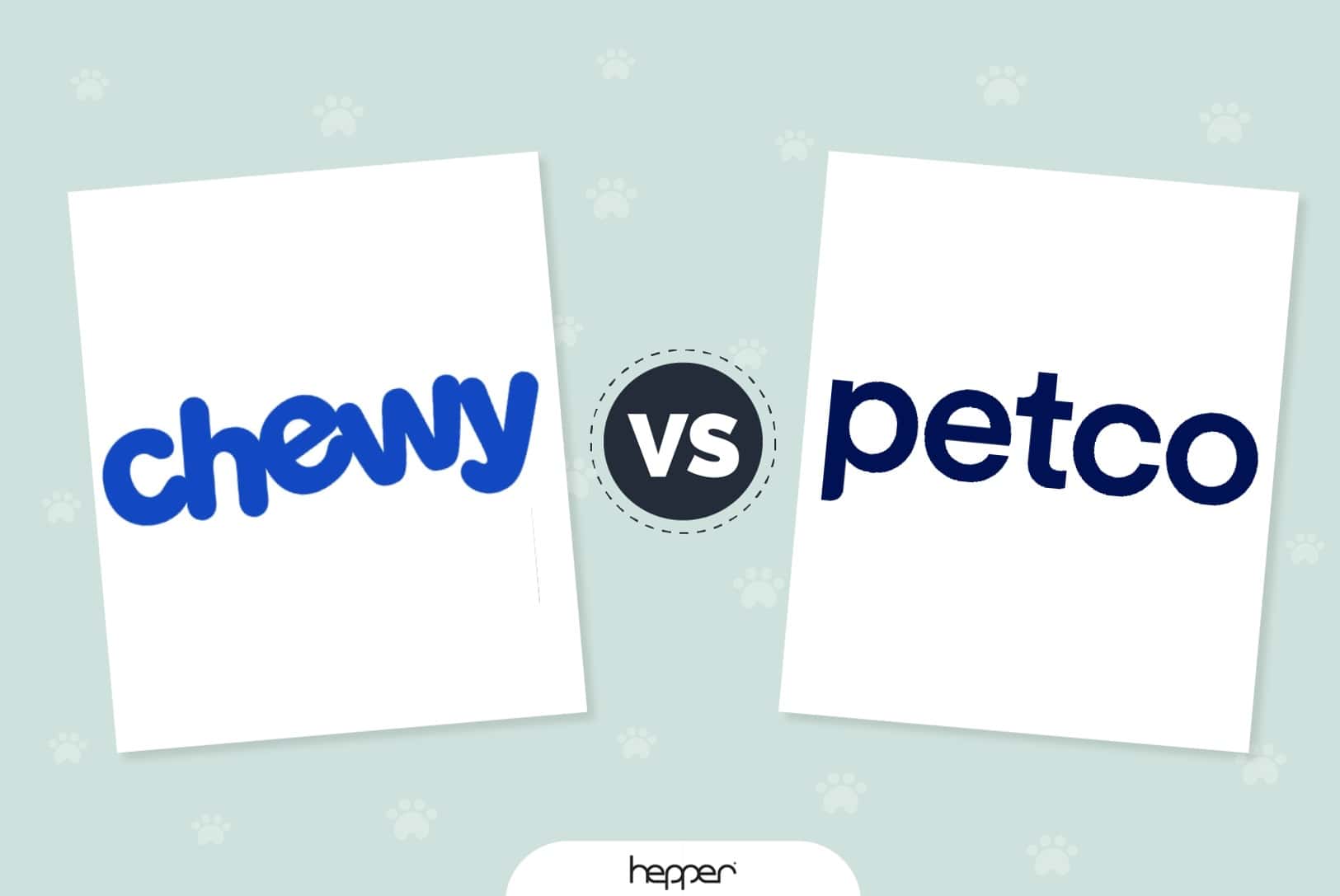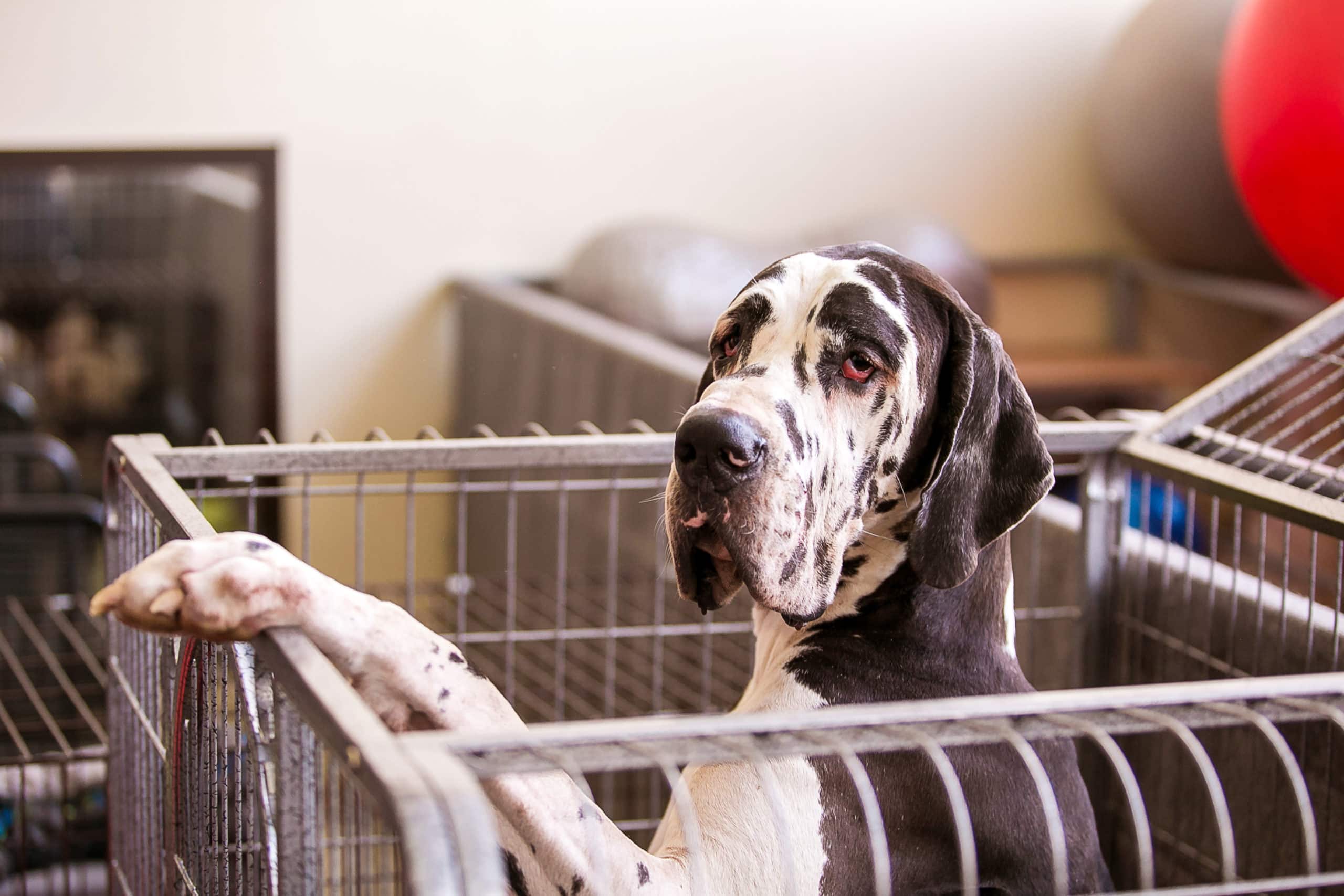Bullmastiff vs Cane Corso: The Differences (With Pictures)
Updated on
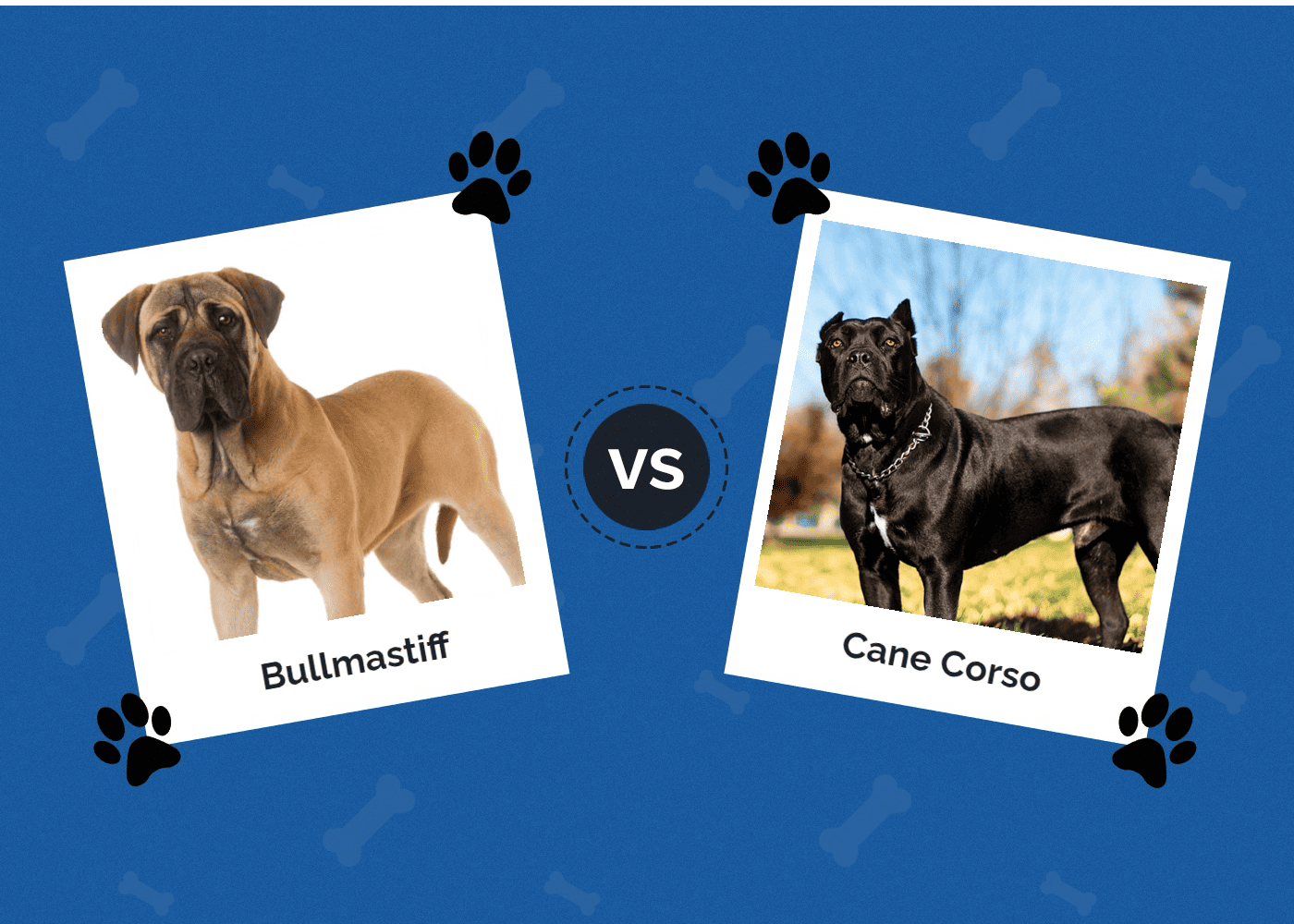
Click to Skip Ahead
If you’re considering adopting a new pet, you might be considering the Bullmastiff or the Cane Corso. The problem is that you are unsure which of these gentle giants would best fit your family. Both are gentle, loyal, protective, independent, and reliable.
They differ only slightly in size and have about the same life expectancy. However, we can discuss a few differences between these two dog breeds. We’ll examine their personalities, character, exercise needs, and any health issues that might be passed down from their parents, so join us.
Visual Differences
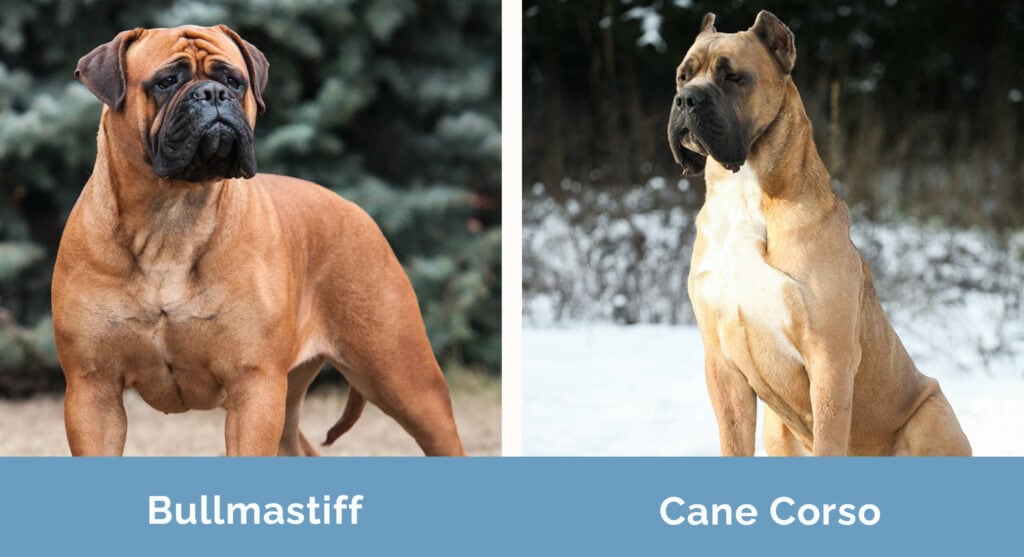
At a Glance
- Average height (adult): 23 to 27 inches
- Average weight (adult): 100 to 130 pounds
- Lifespan: 8 to 10 years
- Exercise: 1 hour a day
- Grooming needs: Low
- Family-friendly: Yes
- Other pet-friendly: No
- Trainability: Loyal, hardworking, fearless, courageous, independent, reliable
- Average height (adult): 23 to 28 inches
- Average weight (adult): 88 to 110 pounds
- Lifespan: 10 to 12 years
- Exercise: 2+ hours a day
- Grooming needs: Moderate
- Family-friendly: Yes
- Other pet-friendly: Maybe
- Trainability: Even-tempered, quiet, protective, loyal, loving, reserved, protective
 Bullmastiff Dog Breed Overview
Bullmastiff Dog Breed Overview
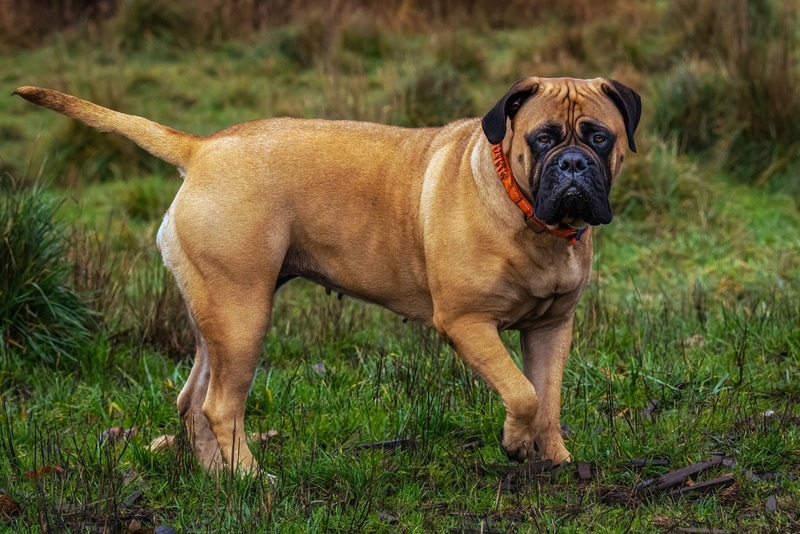
As a crossbreed between a Mastiff and a Bulldog, the Bullmastiff isn’t as large as a Mastiff but is faster than a full-grown Mastiff and larger than a Bulldog. The Bullmastiff is also fearless when presented with any type of danger, especially when protecting its pet parents and property.
Bullmastiffs are calm, don’t get excited easily, but are intimidating in their quietness. They are also very wary of strangers, so you’ll need to expose your pet to various pets and people early to get along with others.
Personality / Character
You can easily describe a Bullmastiff as smart, independent, and extremely loyal. They’re excellent guard dogs that don’t often bark unless they feel threatened, and you can even keep one in an apartment setting. However, they’re wary of strangers and require extensive training and socialization to develop into well-behaved canines.
The biggest problem with a Bullmastiff is that even though they are extremely smart, they are also independent and stubborn, so it can be hard to train. However, if you’re looking for a strong, silent guard or watchdog, the Bullmastiff is ideal.
Exercise
Despite their large size, the Bullmastiff needs only minimal exercise. They need so little exercise, in fact, that though they are big dogs, they do well in apartment spaces. If you take your dog on one long walk a day and play with it at home, you’ll meet their exercise needs and get in some bonding time.
You need to be careful not to over-exercise a Bullmastiff, which could cause health issues. Because they’re massive beasts, their joints can suffer if they’re overworked. If you’re looking for a dog that will run or jog with you, you need to find another breed.
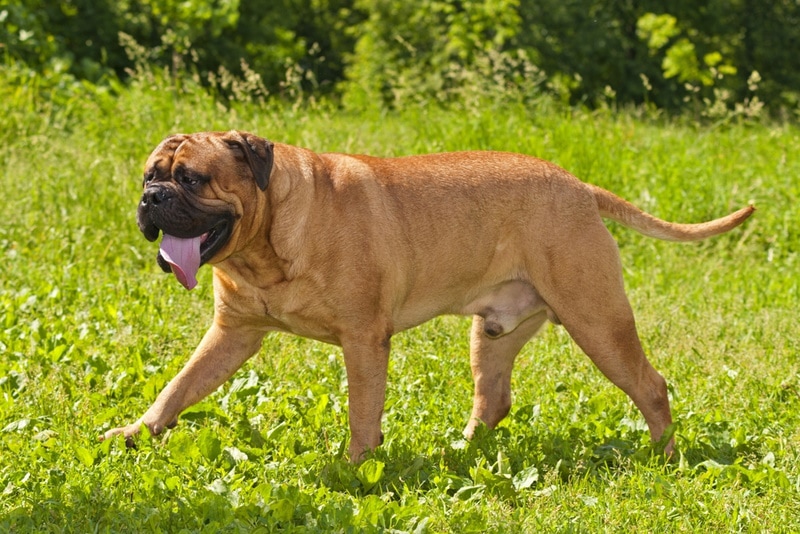
Health & Care
As with any breed, the Bullmastiff is prone to certain health issues that can be passed down from the dog’s parents.
- Subaortic stenosis
- Panosteitis
- Entropion
- Hypothyroidism
- Cystinuria
- Elbow dysplasia
- Hip dysplasia
- Cancer
- Bloat
If you notice any troubling health signs in your Bullmastiff, it’s best to make an appointment immediately for diagnosis and treatment. Make sure to take your Bullmastiff in for regular checkups to keep it healthy and happy.
Suitable for:
Bullmastiffs make great family pets, and unlike most large breeds, they can live equally as well in an apartment as they can in a house with a huge yard. They are very gentle with kids, but you still have to be careful with them around small children because they are so huge and can easily knock a small one to the ground.
Though they make great family pets, Bullmastiffs don’t do well with other pets and can become aggressive, especially with other males. You can socialize and train the dog as a puppy to try and get along with other pets in the household, but the best rule of thumb to follow is for the Bullmastiff to be your only pet.
Cane Corso Dog Breed Overview
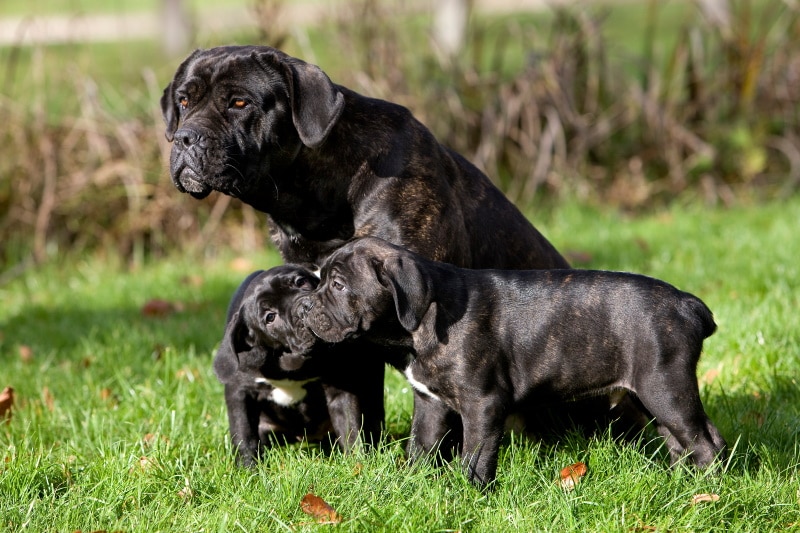
The Cane Corso is another gentle giant that is fiercely loyal, protective, and loving. If trained correctly, it is the perfect pet to be around small children. However, this dog isn’t for beginning dog owners, as it needs a firm hand and an owner who can socialize and train it properly. If you’re looking for a protective guard dog that will love its family unconditionally, this dog is for you.
Personality / Character
The Cane Corso is a large pup that is extremely loyal, highly intelligent, and loving to its family. However, you must be an experienced, confident owner to train and socialize this dog to get along with strangers and other animals.
Because the dog is so huge, it can be dangerous to strangers and its owner if it’s not trained properly. However, you should never hit your Cane Corso, or any pet for that matter, as this will make the dog scared of you and apt to show aggression. An untrained Cane Corso can be aggressive, and first-time dog owners should look for another breed.
Positive reinforcement training is recommended for Cane Corsos since they are extremely sensitive and won’t respond well to being yelled at.
Exercise
A Cane Corso is an active canine known for its agility and speed. They need plenty of outdoor time, and you should walk your dog 2 to 3 miles daily. The dog also needs plenty of interactive toys to keep it sharp and occupied, especially when you’re away from home. It’s also a good idea to enroll the dog in a weekly obedience class so that it can learn from a professional trainer.
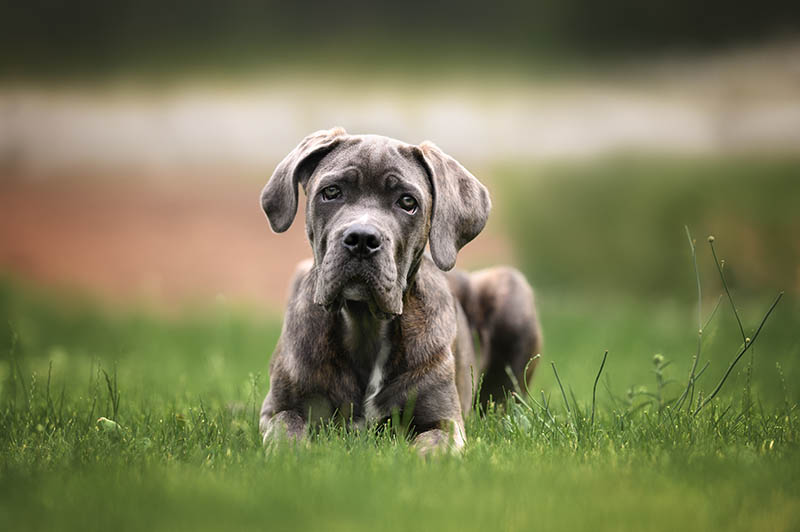
Health & Care
While the Cane Corso is a pretty healthy breed, there are a few health issues to watch out for. The best way to catch these issues before they get any worse is by taking your Cane Corso in for regular checkups with your vet.
- Obesity
- Mange
- Eye issues
- Hip dysplasia
- Idiopathic epilepsy
- Bloat
Suitable for:
The Cane Corso makes a great family pet and is extremely gentle with children. However, they need to be socialized and trained properly by an owner experienced in training large dogs. Because the Cane Corso is so large, it’s recommended that it be the only household pet since it could easily hurt smaller pets. However, if you have smaller pets, they can be socialized and trained to get along with them, but the training process is extensive and requires significant patience and time to succeed.
Which Breed Is Right for You?
Both the Cane Corso and the Bullmastiff are gentle canines when properly trained. The Cane Corso requires more exercise than the Bullmastiff, and it’s not suited for apartment living. However, the Bullmastiff can live in smaller residences and only needs moderate exercise. The Cane Corso is a bit harder to handle than the Bullmastiff and is happier with active families that enjoy outdoor activities.
It’s best if both of these dogs are the only pets in your family because their high prey drives make them more likely to injure or kill smaller pets. It is important to remember that any pet you adopt or purchase is a full-time responsibility, and you must ensure that you and your family are up to the task. If you’re ready to take on that responsibility, either of these dogs would love for you to give them a forever home.
Featured Image Credit: (L) cynoclub, Shutterstock | (R) Tymoshenko Olga, Shutterstock

 Bullmastiff Dog Breed Overview
Bullmastiff Dog Breed Overview

